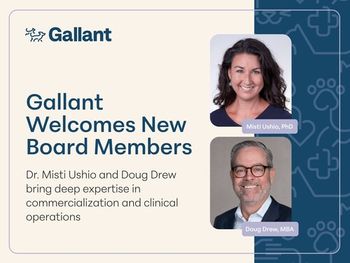
Back to basics: Create checklist for monitoring valuable stock
Higher percentages of gross income for any line-item expense should immediately drive management's closer inspection.
Do you know your operating costs? Could you easily recite the percentage of gross income normals for drugs used or vended, for therapeutic diets, or for flea and heartworm preventives?
In the past several months, we've been startled by some pretty hefty increases in multiple practices we reviewed in detail. Substantial jumps in operational costs, particularly drugs and medical supplies, stood out.
A caveat: When we say increased, we are referring to the practice's comparison with itself over a series of years, not to any so-called industry standard. We compare certain practice expenses as a ratio relationship with the practice revenues generated during the same time period.
Many of the evaluated practices record income and expenses on an accrual basis of accounting. Accrual accounting results in a relatively close matching of assets consumed or utilized (such as inventory stock) with the revenues the practice charged, in part because of utilization of those supplies or through retail sales. Said another way, only the capital used to generate income in a set time span is expensed, resulting in profit.
The accrual basis of accounting allows, practice management to spot potential problems simply through a review of the profit and loss information. Of course, such analysis depends on reliable bookkeeping systems that allow accurate transaction categorization to the correct accounts in a consistent fashion.
Let's assume the practice bookkeeping systems have abided by operational standards. If so, increasing percentages of gross income for any line-item expense should immediately drive management's closer inspection of the underlying transactional detail.
What if you noted a much higher-than-expected expense percentage for drugs and medical supplies? One logical question would be whether an accidental misclassification of equipment resulted in expensing with other supplies purchased from a distributor.
Even one purchase of a substantially costly piece of equipment could cause ratios to be markedly skewed. Such skewing also occurs when multiple smaller equipment purchases are expensed rather than appropriately recorded as longer-lived assets on the balance sheet.
We recall a practice owner who expressed concern over the fact that her practice's office supply expense was so much higher than that of other colleagues and benchmarking data. Our inspection of QuickBooks data detail quickly isolated the expenditure of several laptop computers and some other accessories as office supply expense. The result was an expense ratio at about double what it would have been otherwise.
If the practice's Board of Directors established clear capitalization protocols, bookkeeper confusion would result in fewer errors. Capitalization protocols define at what dollar amount a particular purchase should be listed on the property schedules as a depreciable asset rather than a "supply" expensed in the same period. In some cases, small items of equipment, such as a hemostat or forceps might be expended as surgical supplies.
Larger bulk purchases of surgical instrumentation to fill out surgery packs would be more appropriately handled as capitalized assets so surgery supply expense is not overstated. Quality surgical instrumentation has a life expectancy spanning far beyond a single-year use, even by the toughest surgeon.
From a managerial perspective, bookkeeper care in classifying all longer-lived equipment as capital assets is the best way to assure fairly accurate interpretation of practice operational results. Profit will be clearly reflected with better consistency of ratios through multiple fiscal periods.
From a fiduciary standpoint, such categorization is also appropriate, to mitigate tax agency difficulties. Flowing equipment acquisitions through expense categories, particularly when some great alternatives exist under current tax law, doesn't make a whole lot of sense. Never-theless, many bookkeepers often don't realize all of the ramifications of inappropriate accounting for assets with useful life expectancies for revenue generation of greater than one year.
A closer look
What should you review next?
In the event that bookkeeping is solid and transactions have been recorded where they should be, then closer inspection of purchasing and inventory management protocols must occur. The following checklist establishes some common areas of inspection even if you don't believe you have a significant problem with practice cost overruns.
- Review purchasing protocols with the purchasing agent. Has anything changed in the last 24 months that would affect the volume of supplies coming through the door?
- Does the purchasing agent consistently shop for the best deal, or does she have any preferences for a particular supplier? Sometimes if special relationships are struck with a certain supplier, that individual will be given the bulk of orders regardless of the price to the hospital.
- Are all the returns of short-dated and damaged goods promptly accomplished so refunds can be received from the vendor?
- Once items have been sent back, is a credit notification given to the practice manager so he or she can be on the lookout for returned money from the vendor?
- Have all refund checks been deposited to the practice rather than diverted by some other party? Sometimes vendors give substantial refund checks when large volumes of vaccines, heartworm preventives or other medications are purchased in the course of the year. In the past, we have run into situations where a check was personally cashed and the funds used for other purposes without recording the transaction on the books, sometimes for the particular practice and sometimes not.
- Verify that all vendors make shipments directly to the practice and not to any alternative locations.
- Re-assess receiving and unpacking protocols. Are the individuals who are unpacking goods very clear about their responsibilities and how they reconcile the paperwork to the shipment contents?
Is all paperwork signed off, dated and time-stamped by the un-packer before such paperwork is given to the accounts payable clerk to reconcile before vendor payment?
- Watch for drug redundancy. With multiple medical providers and staff turnover, personal preferences may take precedence over efficient management of inventory and pharmacy supply restrictions to certain lines of products. When each doctor or technician exerts his or her own preference for a particular product, overstocking can easily occur, leading to cost overruns.
- Physically review all of the storage areas in the practice. Look for redundancy. Come to a consensus among doctors as to which items will be maintained and which will not.
Along this line, whenever the sales person makes a proposal for adding an additional new product to the pharmacy, evaluate what can be abandoned. A good rule of thumb is to evaluate a product for its purported superiority over the products currently stocked. If it is an improvement, then an old product line is eliminated just as the new product line is introduced.
- Conduct physical inventory on a regular basis. This involves hand counts of particular items, usually rotating through a portion of total inventories at least on a monthly basis. High ticket items, such as flea and heartworm preventative, anti-arthritic medications and those with high street values, should be the first on the list and evaluated with test counts on a fairly frequent basis. A physical count should be checked against the perpetual count established by the practice computer system.
Other items to physically count include dietary products. Dietary product is often stolen or wasted in the cost of treating boarded and hospitalized patients. Re-establish feeding protocols of in-house patients and boarded pets to minimize wastage. Underfeeding rarely presents a problem in most veterinary practices.
Take inventory of controlled substances at least once each month. Consider the high risk associated with controlled drugs, particularly from the potential monetary loss in the event of substantial regulatory fines. Keep abreast of monitoring this inventory class on a regular and consistent basis. Ideally, any of the DEA-licensed veterinarians in the practice should regularly supervise and sign off on the inventory reconciliation even though a designated registered technician may be completing the count.
For all accounts regardless of whether controlled drugs or not, we strongly recommend rotating staff or employee responsibility. Assure that every person is accountable and aware of the ramifications. Keep record-keeping responsibility diversified to minimize opportunity for record manipulation to disguise supply diversion.
We suggest segregating all flea and heartworm preventative expense into two separate categories when payments are made. This protocol results in two additional expense lines under Cost of Professional Services. Your goal is bookkeeping protocols that expedite your identification of higher than normal turnover for items with particularly high street value and are expensive to purchase.
- Review practice pricing strategies, to assure that they are in accord with current goals. Most practices constantly tweak pricing, particularly for pharmacy items because the market has become so competitive. Evaluate mark-up and how prices are recorded in the computer system. Assign a second set of eyes to check prices as listed in the computer system compared with original purchase price.
- Assure that each product has been assigned a minimum price to charge. In the event someone would make an input error of newly increased product cost, the minimum price established would prevent sales at or below acquisition cost.
- Regulate what employees are buying, and keep track of it through good records. Particularly if employees buy large quantities of drugs at cost, this could skew the practice's results of operations.
- Try to design your facility to secure inventory in a central supply area. This will help the owner restrict access only to those who need it for physical counts and restocking the hospital. Many practices are now considering camera systems and other security measures to protect inventory, as well as other practice assets. At a recent seminar, an attendee suggested new thumbprint scanning technology as a means to better secure many aspects of inventory.
- Update employee manuals and revisit protocols with employees. Prohibit off-hour visits to the practice. Friends and family should never be allowed on premises with an employee unless explicitly at management's invitation. Employees should know that their presence on practice grounds after their regular work hours constitutes unacceptable behavior and makes them subject to discipline.
- Check over all invoicing protocols. Often times, the fact of rampant practice undercharging for a wide variety of services results in gross revenues that are much lower than normal for the cost of providing them.
Veterinary practices incur much more overhead costs than other service-based businesses. Veterinary practices are "capital intensive". A higher proportion of capital is required for facility upkeep, expensive equipment investment, and an expensive supply inventory for pharmacy and other animal-care needs.
In a small animal practice, we typically observe 20 to 25 cents of every dollar of revenue going right back out to vendors and suppliers of products directly related to the treatment of animals. This includes laboratory supplies, laboratory services, surgical supplies and dietary product costs. In equine practice, the span typically ranges from 20 to 35 cents of every revenue dollar.
With that kind of financial pressure for vendor payment, we would think that more practice administrators would be very concerned about instituting and maintaining protocols and policies that protect inventory levels to the greatest extent possible while still being conducive to efficient patient care.
We hope this article challenges you to more closely evaluate and improve the whole range of practice activities, spanning from original bookkeeping entry, straight through purchasing policies and facility security.
Dr. Heinke is owner of Marsha L. Heinke, CPA Inc. and can be reached at (440) 926-3800 or via e-mail at
Newsletter
From exam room tips to practice management insights, get trusted veterinary news delivered straight to your inbox—subscribe to dvm360.






